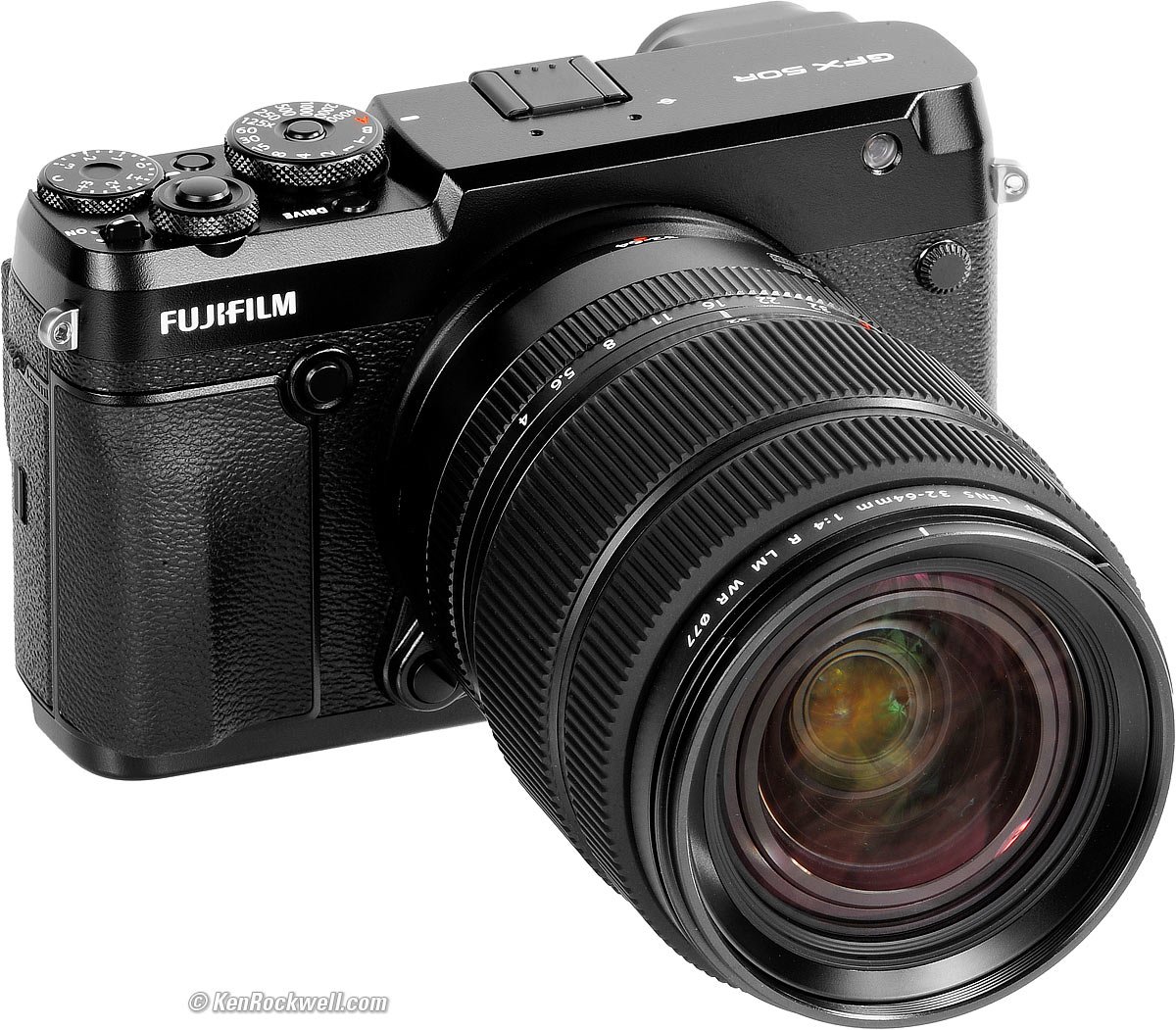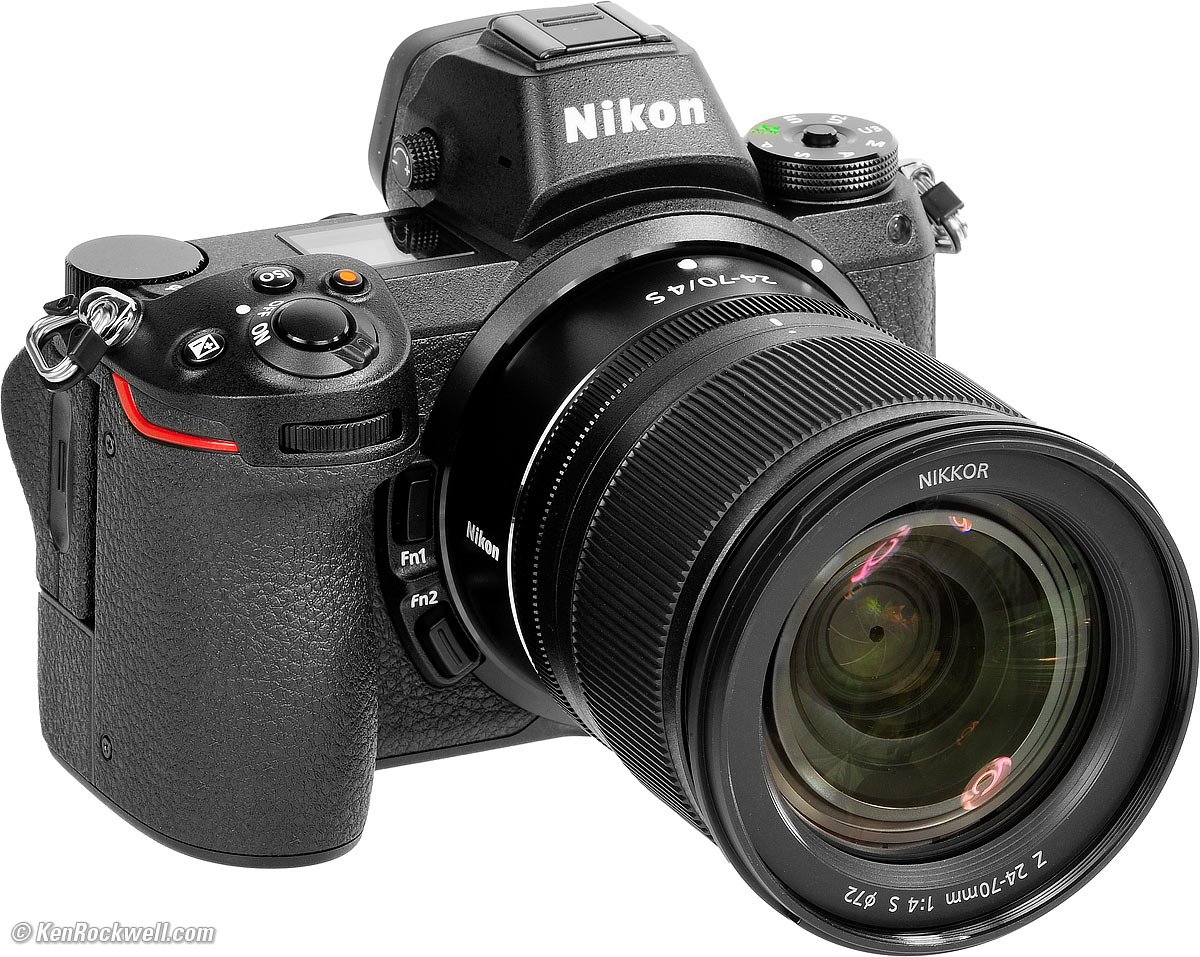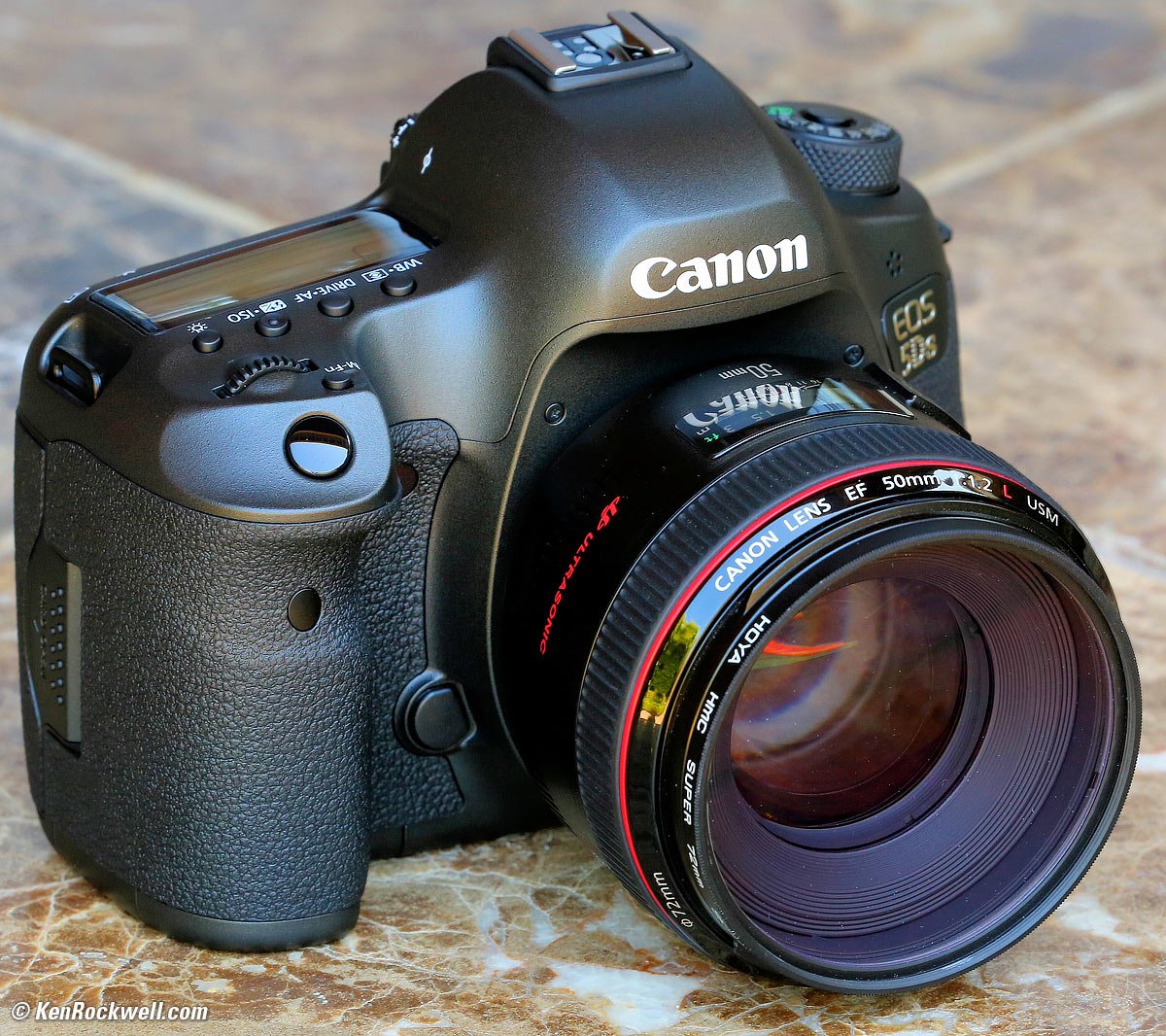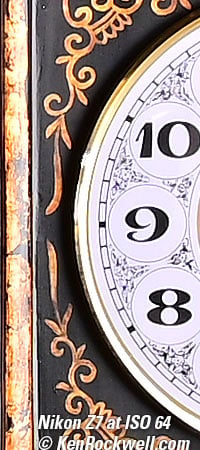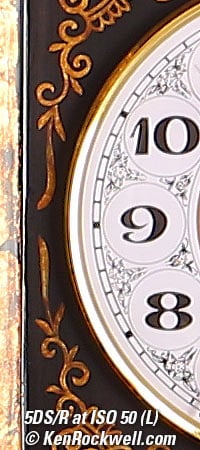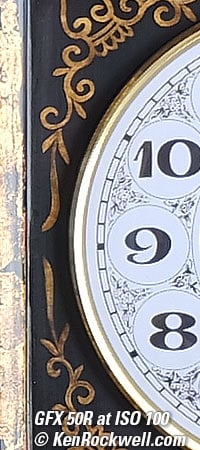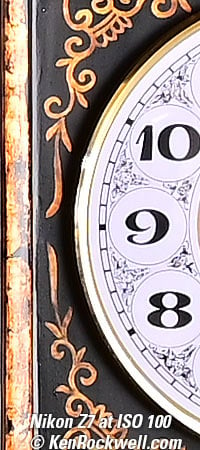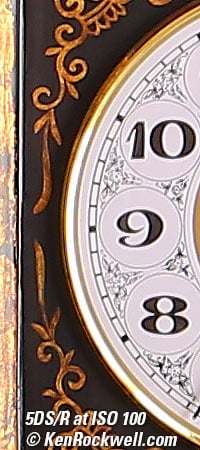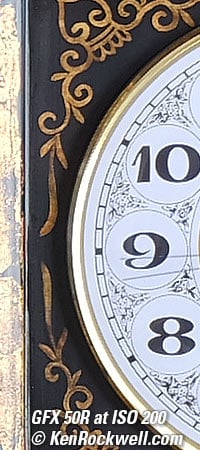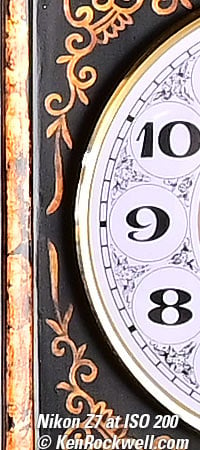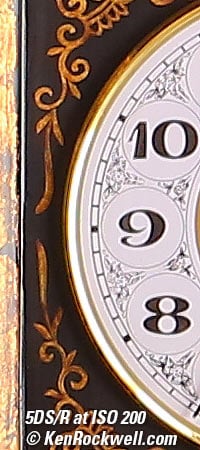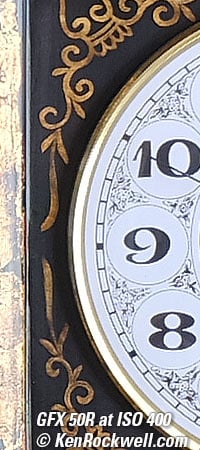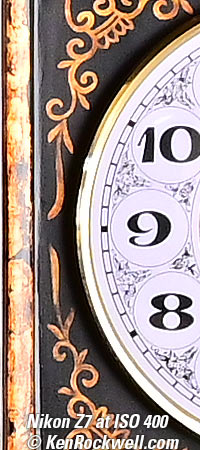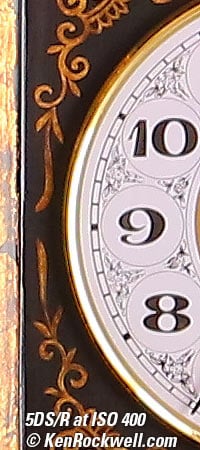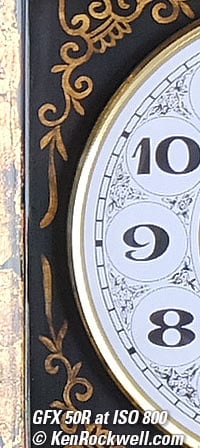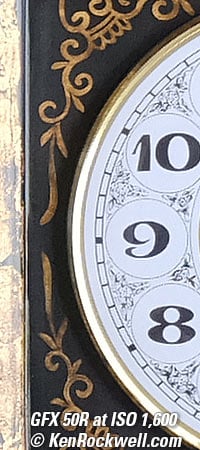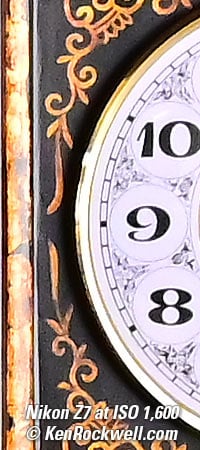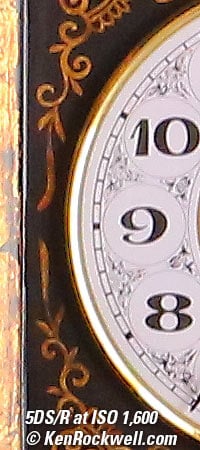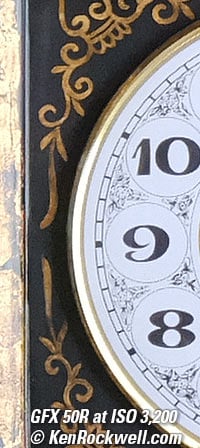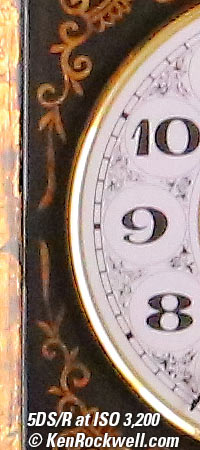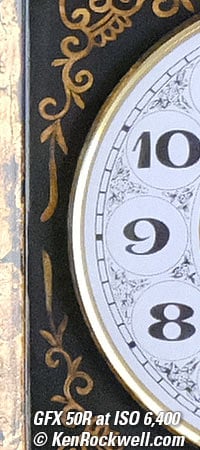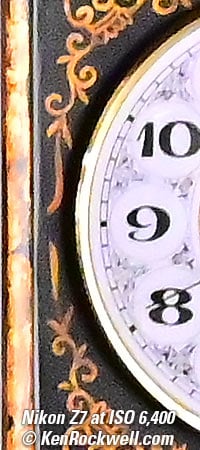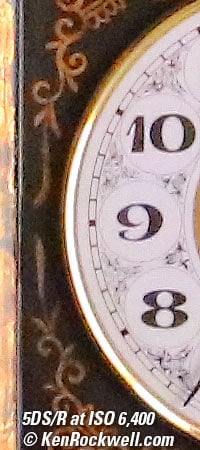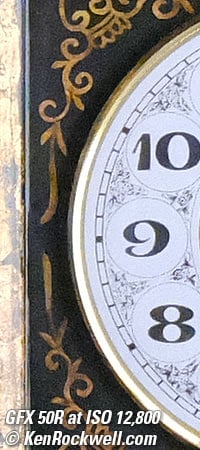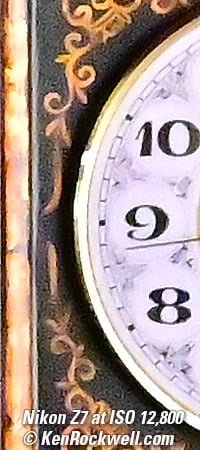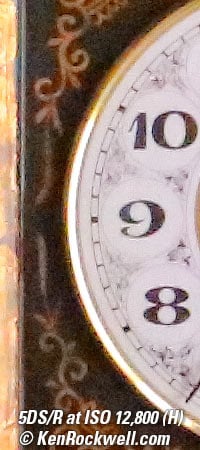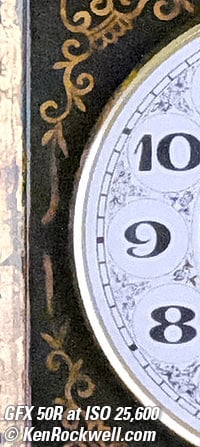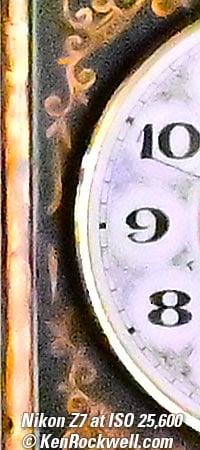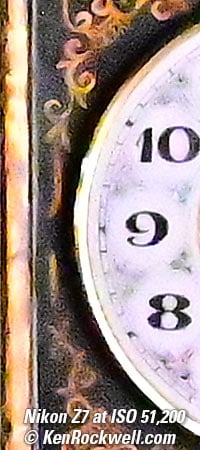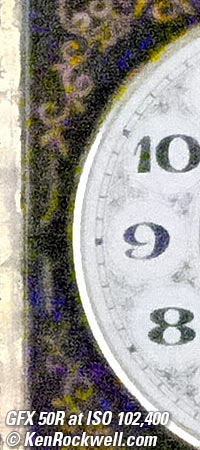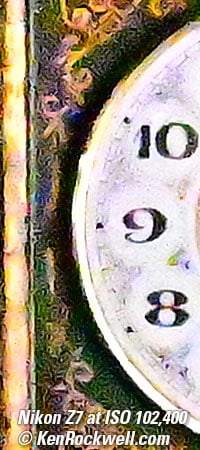Full-Frame vs Medium Format
GFX 50R vs Z7 vs 5DS/R
This all-content, junk-free website's biggest source of support is when you use any of these links to approved sources when you get anything, regardless of the country in which you live. Thanks for helping me help you! Ken.
May 2019 Better Pictures Canon Sony Nikon Fuji LEICA Zeiss Hasselblad All Reviews
Sony vs. Nikon vs. Canon Full-Frame
Introduction
Will medium-format digital, with only a small increase in sensor size from full-frame (33 × 44mm vs 24 × 36mm, or only a 27% linear increase), look any better or worse than full-frame, especially when we realize that medium-format digital only comes from much smaller companies with much smaller development budgets than full-frame which comes from giants like Nikon and Canon with nearly unlimited resources to optimize designs to get everything out of their smaller sensors?When I got my 50 MP Fujifilm GFX, I compared it to my state-of-the-art 50 MP Canon 5DS/R and state-of-the-art 47MP Nikon Z7.
These are 200 × 450 pixel crops from the original 50MP files, all shot at the same distance with the same (equivalent) lens.
I'm only showing these super-tight tight crops; looking at the complete images at this size will only show the huge differences in color rendition between the demure Fujifilm camera and the rude colors I get from my Nikons and Canons with their saturations pumped all the way up to beyond legal limits as I usually shoot them.
How tight are these 200 × 450 pixel crops that vary in size to fit your browser window?
If each crop is about 1" (2.5cm) wide on your screen, then the complete image printed at this same high magnification would be about 29 × 43" (2.4 × 3.6 feet or 0.75 × 1.1 meters).
If each crop is about 2" (5cm) wide on your screen, then the complete image printed at this same extreme magnification would be about 58 × 87" (4.8 × 7.2 feet or 1.5 × 2.2 meters).
If each crop is about 4" (10cm) wide on your screen, then the complete image printed at this same insane level of magnification would be about 116 × 174" (9.7 × 14.5 feet or 2.2 × 4.4 meters).
These were shot on different days by natural available light, so the exposures and colors aren't supposed to match. Don't read too much into the colors other than that Fuji can't make wild colors as I have my Nikons and Canons set to do.
Images
Click any of these crops for the camera-original © JPG files, each about 20MB file size:
Fujifilm GFX 50R & |
||
Canon 5DS/R stops at ISO 12,800 (H) |
||
Canon 5DS/R stops at ISO 12,800 (H) |
||
Canon 5DS/R stops at ISO 12,800 (H) |
Technik
I used a tripod and shot by available natural light on different days. Oddly the light was so different that the detail in the gold center of the clock simply disappeared in the Fujifilm and Canon shots; so ignore that if you look at the full images.
I shot each camera with a 50mm equivalent lens at f/8 and used each camera's own FINE JPGs, each about a 20MB file.
What's interesting is that while I used the sharpest lens I had handy for each, the Fujifilm GF 32-64mm sells for about $1,799 on special, the Nikon Z 24-70mm f/4 sells for about $997 and the basic Canon EF 50mm f/1.8 STM sells for only $125 — and the $125 Canon lens holds up to the others just fine. Camera makers don't want you to know that 50mm f/1.8 lenses are often the sharpest lenses made, as well as the most useful and least expensive.
I had the Nikon and Canon sharpening pegged at their top settings as I shoot each: +9 Sharpening and Midrange left at +2 for the Z7 and 7,5,5 in my 5DS/R. I left the GFX at its default settings for sharpness.
For color I have my Nikons and Canons set to the max: VIVID and +3 saturation for Nikon and STANDARD with +4 Saturation for Canon. Fujifilm cameras can't make wild colors; I set my Fujis to +4 for Color and they stay reasonable as you'll see here.
I pulled the Nikon shots from my files where I had shot it at its default low ISOs of ISO 32 and ISO 64; I didn't have any shots at ISO 50 rather than 64. Tough.
Analysis
Below ISO 100 the Nikon looks about as sharp as the GFX. HA! Actually the GFX is a little better with details: look for the fine breaks in the circles around the 8, 9, and 10 o'clock digits.
Medium format digital doesn't make sharper pictures or sharper pixels at low ISOs; if you have the same number of pixels (about 50 MP in each of these cameras) they all are as sharp at the lowest ISO. In this case, none of these cameras use much if any anti-alias filtering at the sensor and little to no noise reduction at their lowest ISOs, so pixels are the same.
The Canon is not quite as sharp at the lowest ISOs because that's just how Canon cameras make their in-camera JPGs; Canon's in-camera JPGs aren't as sharp as in-camera JPGs from Fujifilm or Nikon. If I cared about the slight difference I would shoot raw where this difference would go away — but since I shoot every day for a living and know how to get the great results I need directly in-camera, I don't fiddle with raw. The Canon shots were also with less exposure, so they're darker which also looks softer — tough, this is a free website and that's what you get.
The very interesting part is what happens at higher ISOs. At ISO 100 the GFX is already slightly sharper than the Nikon (look again at how the Nikon's noise reduction is already covering-over the slight breaks in the circles around 8, 9 and 10), and how at ISO 200 the Nikon is softer than the GFX.
As we go up in ISO the Nikon is getting softer and softer (look at the doily-work between the digits), while at ISO 800 the GFX still looks great. As of about ISO 800 the Canon is about as sharp as Nikon; noise reduction in each full-frame camera is limiting the sharpness.
At ISO 1,600 you can still see just about all the details in the scrollwork between the digits with the GFX, while it's half turned to mush with the full-frame cameras.
At ISO 3,200 you can still see just about all the details in the scrollwork between the digits with the GFX, while it's mostly just mush with the full-frame cameras.
At ISO 6,400 the circles around each digit are completely gone from the Nikon images (noise reduction is doing this), while they're still sort of there in the Canon and still completely there in the GFX. The scrollwork between digits is all gone from the full-frame cameras, while it's all still there in the GFX. The Canon still shows the circles, while they're long gone from Nikon. At ISO 6,400 you're also seeing noise in the black parts of the Nikon image while the other two are still clean (you'd probably see noise in the Canon image if it had more exposure). At ISO 6400 the GFX still looks great and clean and detailed, while at this high magnification full-frame has lost it.
At ISO 12,800 the GFX still looks great, while the Nikon and Canon have lost all the details between the digits. Full-frame cameras have been reduced to mush, while the GFX image is still clean and detailed; look also as the curly gold painted lines against black. If you look at the full image files, you'll see that you still can see the dark fireplace screen in the GFX image while it' s mostly gone from full frame at ISO 12,800.
The Canon only goes to ISO 12,800; as Canon's highest-image-performance camera they chose not to put in the insane ISOs that just look crappy.
At ISO 51,200 the minute marks are mostly gone from the Nikon image and even the digits are starting to be eaten away by the Nikon's noise reduction, while most of the details in the GFX are still there.
At ISO 102,400 the Nikon image is just garbage; there's nothing left. The noise reduction has eaten everything away. The fine details are finally gone from the GFX image.
Recommendations
At low ISOs medium-format is as sharp as full-frame. Image quality depends more on your color preferences than anything technical. Also not shown here is that for any equivalent focal length the medium format camera will have less depth-of-field because the lens focal lengths have to be longer.
The real technical advantage of medium format comes at high ISOs. While older medium format backs had crummy high-ISO performance, today obviously something like the Fujifilm GFX is the way to go if you're serious about shooting at high ISOs and enlarging your images.
Also important is that you can shoot medium format at higher ISOs and get completely awesome results with zero loss. While full-frame starts losing details even at ISO 200, the GFX is still loaded with detail even at ISO 12,800! Looking at fine details at high ISOs I see about a four-stop advantage to medium format. Look at the GFX at ISO 12,800 and it looks sharper than the Nikon or Canon at ISO 1,600 and about the same as the full-frame cameras at ISO 800! The GFX at ISO 25,600 has the same level of fine detail as full-frame has at ISO 1,600. (Open this page in a second browser window so you can scroll up and down to compare them yourself.)
© Ken Rockwell. All rights reserved. Tous droits réservés. Alle Rechte vorbehalten.
Help Me Help You
I support my growing family through this website, as crazy as it might seem.
The biggest help is when you use any of these links when you get anything. It costs you nothing, and is this site's, and thus my family's, biggest source of support. These places always have the best prices and service, which is why I've used them since before this website existed. I recommend them all personally.
If you find this page as helpful as a book you might have had to buy or a workshop you may have had to take, feel free to help me continue helping everyone.
If you've gotten your gear through one of my links or helped otherwise, you're family. It's great people like you who allow me to keep adding to this site full-time. Thanks!
If you haven't helped yet, please do, and consider helping me with a gift of $5.00.
As this page is copyrighted and formally registered, it is unlawful to make copies, especially in the form of printouts for personal use. If you wish to make a printout for personal use, you are granted one-time permission only if you PayPal me $5.00 per printout or part thereof. Thank you!
Thanks for reading!
Mr. & Mrs. Ken Rockwell, Ryan and Katie.
